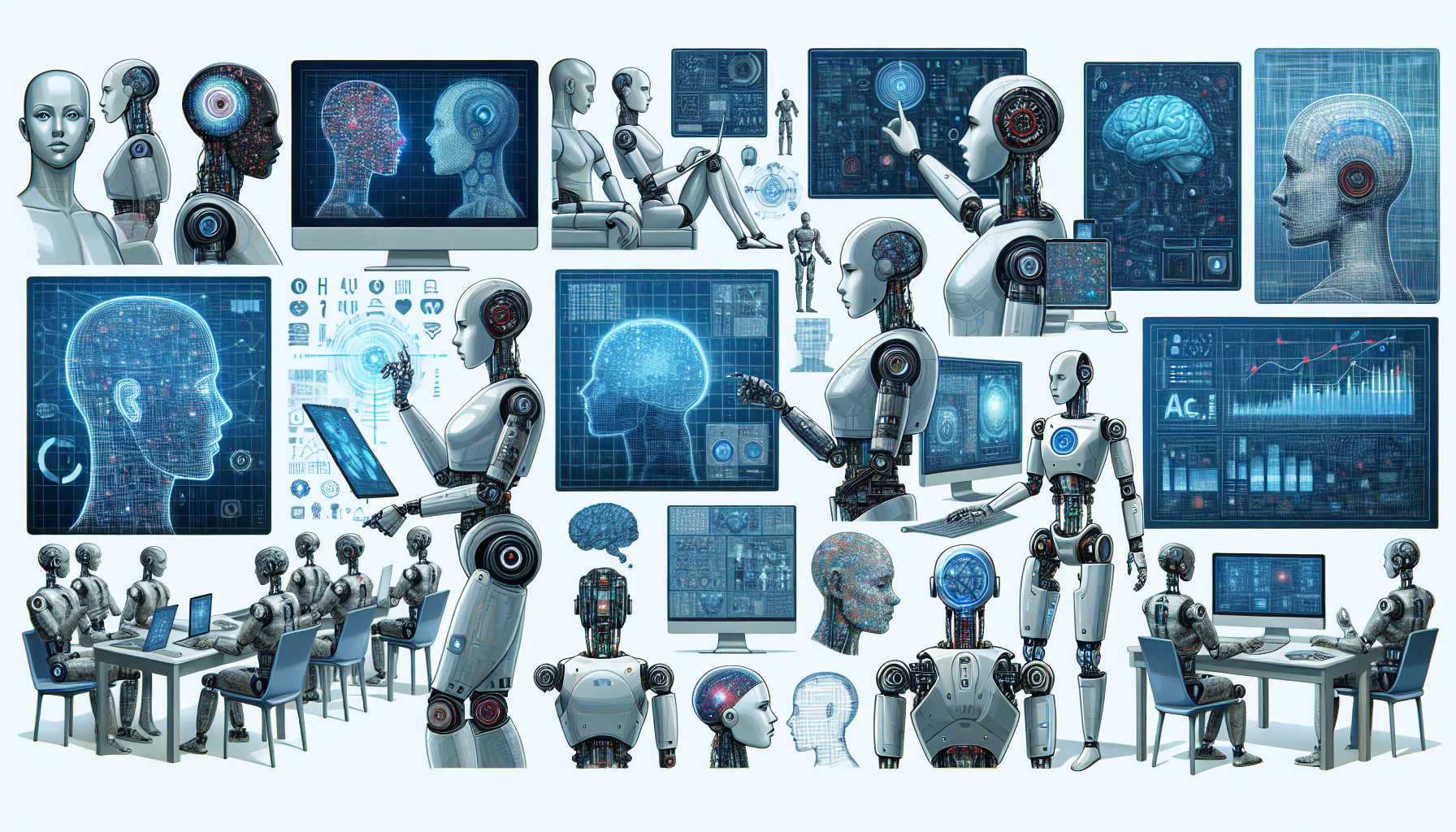
AI-Enabled Robots for Self-Training: Comprehending the Technology and Its Ramifications
The Progression of AI and Robotics: A Daring New Era
Artificial Intelligence (AI) has been making significant strides across multiple sectors, transforming our interaction with technology. From intelligent home gadgets to self-driving cars, AI has consistently demonstrated its potential in improving efficiency and precision. Yet, it is within the sphere of robotics where AI’s prowess is being truly challenged. The recent advancement from MIT researchers serves as a clear example, having created a novel algorithm that empowers robots to self-train—independently of human involvement.
The algorithm, labeled “Estimate, Extrapolate, and Situate” (EES), surpasses mere basic programming. It equips robots with the capability to assess themselves and enhance their skills, marking a notable progression in autonomous technology. But what does this signify for the future of robotics, and how could it affect our everyday lives?
Mechanism of the EES Algorithm
The EES algorithm signifies a transformational change in the learning and adaptation processes of robots. Historically, robots have been programmed by humans for precise tasks, often necessitating extensive code and manual input. However, utilizing the EES algorithm, robots can now utilize vision systems to survey their environment, analyze the tasks they face, and identify their own weaknesses.
For instance, imagine a robot assigned the task of tidying a room. With the EES algorithm, the robot can appraise its own performance, recognize inefficiencies—such as overlooked spots or areas that could be cleaned more swiftly—and subsequently create its own training resources to practice and refine its skills. This self-directed learning capability enables robots to enhance their competencies over time with minimal human supervision.
Potential Uses and Real-World Evaluation
The range of possible applications for the EES algorithm is extensive. To date, researchers have trialed it on Boston Dynamics’ Spot robot dogs, which are already recognized for their aptitude in handling simple tasks. Following the implementation of the EES algorithm, Spot exhibited an elevated level of intelligence and adaptability, enabling it to execute its duties more effectively.
This newfound autonomy has the potential to transform sectors such as manufacturing, logistics, and healthcare, where robots could undertake more intricate tasks necessitating ongoing learning and adjustment. For example, robots in manufacturing could independently streamline their processes, resulting in enhanced productivity and diminished human error.
Moral Considerations and AI’s Future
Regardless of the optimistic strides in robotic self-training, AI’s advancement still prompts ethical dilemmas. The concept of robots evolving independently raises apprehensions that AI might eventually exceed human oversight and lead to unforeseen repercussions. These worries are not entirely baseless; even leading voices in AI research have voiced concerns regarding the future ramifications of ever-more autonomous machines.
Nevertheless, it is crucial to understand that the EES algorithm and akin technologies are chiefly intended to boost efficiency in harmless tasks, not to empower robots in warfare or other detrimental endeavors. It falls upon researchers, policymakers, and society at large to ensure that these potent tools are utilized in a responsible and ethical manner.
The Influence of Global Stakeholders and Associated Risks
Although the emergence of self-training robots is a noteworthy achievement, it raises questions about the use of this technology by global stakeholders. As AI and robotics evolve swiftly, there are legitimate concerns that these technologies could be misused for unethical purposes. For instance, worries have emerged that nations such as China could appropriate such algorithms for military technology, including the development of autonomous weapon systems.
As with any formidable technology, vigilance and international collaboration are vital to avert exploitation. Establishing global standards and ethical principles is essential to regulate the development and deployment of robotics driven by AI.
Final Thoughts
The introduction of the EES algorithm marks a groundbreaking step in robotics, allowing machines to learn and adapt autonomously. While the applicability of this technology is broad and promising, it is equally essential to confront the ethical challenges and risks tied to increasingly autonomous systems. As AI continues to advance, society must judiciously navigate the hurdles and prospects presented by these innovations to ensure a future where technology positively and ethically benefits humanity.
Q&A: Frequently Asked Questions About Robot Self-Training and AI
Q1: What is the EES algorithm?
– A1: The “Estimate, Extrapolate, and Situate” (EES) algorithm is an AI-powered method that permits robots to self-train by evaluating their performance, uncovering weaknesses, and developing their own training materials for skill enhancement without human aid.
Q2: What are some potential applications of the EES algorithm?
– A2: The EES algorithm can be utilized across diverse sectors, such as manufacturing, logistics, and healthcare. Robots equipped with the EES algorithm can autonomously enhance their tasks, resulting in greater productivity and decreased human error.
Q3: What are the ethical concerns linked to self-training robots?
– A3: The primary ethical issue is the fear that AI could gain control beyond human oversight, leading to unforeseen outcomes. Additional worries encompass the possible misapplication of this technology in military settings or other harmful scenarios.
Q4: How does the EES algorithm stand apart from conventional robot programming?
– A4: Conventional robot programming necessitates human input for every task. Conversely, the EES algorithm empowers robots to assess their performance, learn from errors, and enhance autonomously, reducing the reliance on ongoing human oversight.
Q5: Are there risks associated with global players accessing this technology?
– A5: Yes, there are concerns that nations with less rigorous ethical frameworks might exploit this technology for military or other dangerous uses. International cooperation and regulations are crucial for preventing such misuse.
Q6: How could this technology impact employment?
– A6: While self-training robots could heighten efficiency across various sectors, they might also lead to job loss in industries dominated by routine tasks. However, it could simultaneously create new roles in robotics management, AI development, and related fields.